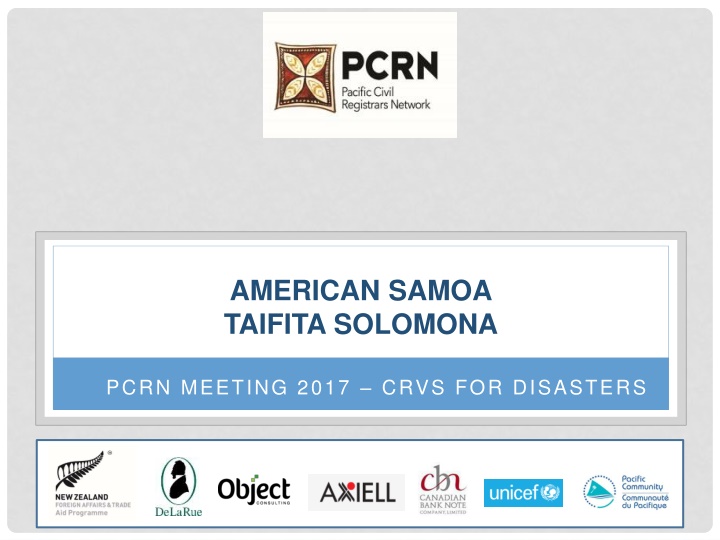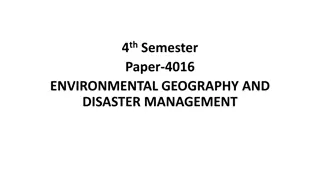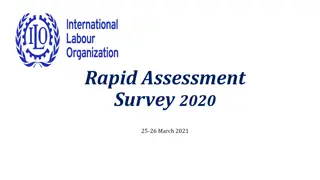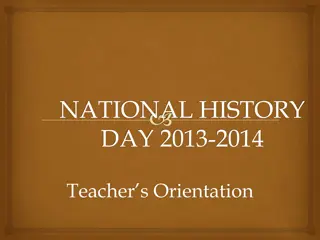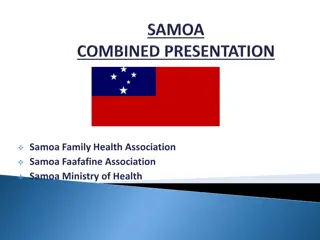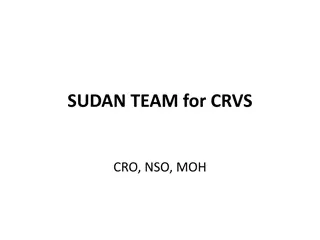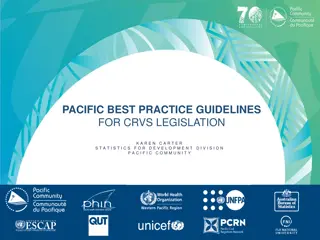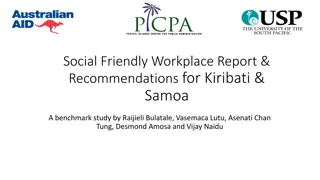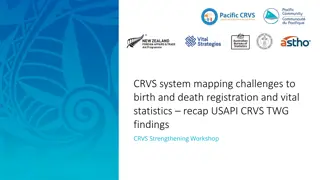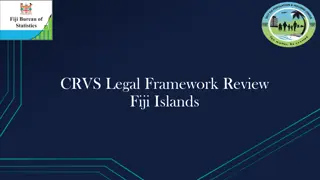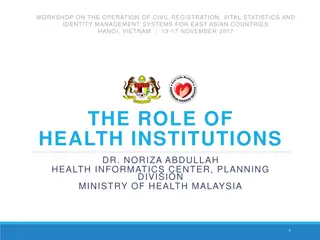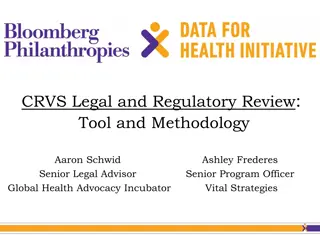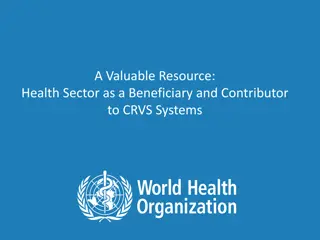Critical Review of CRVS Implementation for Disaster Management in American Samoa
Birth and death registration in American Samoa is reported as almost complete within one year, with comprehensive data storage and protection measures in place. The CRVS committee ensures accuracy and efficiency, despite facing challenges related to legislation compliance, data sharing, and disaster preparedness.
Uploaded on Sep 23, 2024 | 0 Views
Download Presentation

Please find below an Image/Link to download the presentation.
The content on the website is provided AS IS for your information and personal use only. It may not be sold, licensed, or shared on other websites without obtaining consent from the author.If you encounter any issues during the download, it is possible that the publisher has removed the file from their server.
You are allowed to download the files provided on this website for personal or commercial use, subject to the condition that they are used lawfully. All files are the property of their respective owners.
The content on the website is provided AS IS for your information and personal use only. It may not be sold, licensed, or shared on other websites without obtaining consent from the author.
E N D
Presentation Transcript
AMERICAN SAMOA TAIFITA SOLOMONA PCRN MEETING 2017 CRVS FOR DISASTERS https://encrypted-tbn1.gstatic.com/images?q=tbn:ANd9GcTqyULz4iedKjR5uCCa6tfQkd80Tmt24kvK_0Lr6I-GFdsKi-KNYKACpQ Image result for spc Object Consulting Software development for large-scale business applications, Sydney, Melbourne Australia
OVERVIEW Birth Registration is estimated to be: 100% complete within 1 year of birth 99.9% of the total population is estimated to have had their birth registered Birth certificates are provided for all births Death Registration is estimated to be: 100% complete within 1 year of death Cause of death (from a medical certificate) is provided for 100% of all deaths CRVS committee: Vai Filiga (POC) National Statistics, Tai Solomona Registrar of Vital Statistics, Anaise Uso DoH (HIS), Suafa Toluao LBJ Hospital Medical Records, Judy Payes COD Coder (LBJ Hospital) and William Ledoux Assistant Attorney General. Yes, we have worked on our Action Framework Gloria Methenge should be able to give you the latest although it is still in process.
DATA STORAGE AND PROTECTION Where CR data is stored? It is stored centrally in the office of Vital Statistics - one location for the country. This is births, deaths, marriages, divorces and Identification documents. How records are stored? Records are stored electronically and some are paper records. We have about 30% electronically recorded and about 70% - 80% in paper records. Whether data is backed up/ protected off site/ local duplicate of the hard drive, copies of paper records? Data is backed up in reels of tapes, local hard drive and we are working on getting an off-site backup location. While we still have copies of paper records. How often the back up is done? It varies 6 months to a year depending on the volume and accrual of records.
MAJOR CHALLENGES FOR CRVS (PRE AND POST DISASTER) Legislations Updates on agencies responsibility in tasks and specifics in registration. o This is an issue since the current practice is not what is subscribed in the statutes. There is an issue on reporting and registration portion of events; this will need to be clarified in the statutes, thus, there is no overlap of responsibility that will cause confusion and delay in registration. o Special consideration is that when it is clear of whom s responsibility it is, the pre- disaster people are aware of their responsibility and the same with the post-disaster part o None at this time Health recording of deaths is routinely shared with the registry office. o Registration is dependent on the family providing health information to the Medical Records of the hospital, this will result in completeness and accessibility. Since we have one and ONLY one hospital, getting the information would not be a challenge. Family members would only go to the hospital to provide the information for the registration since there is no other Health Care provider. They know registration is important for benefits and assistance. o Tracking deaths in a disaster is even more critical & access to registry services may be harder than normal so linking with health system is essential.
DISASTER SCALE UP Registration following a disaster would be coordinated by using our stakeholders in the CRVS committee or working group. The members of the committee are the key people with direct responsibilities in the registration of deaths and casualties within their respective agencies. The major challenges would when we do not have the means to get the information for registration; lack of communication lines and getting transportation to give the information to the proper officials for registration.
